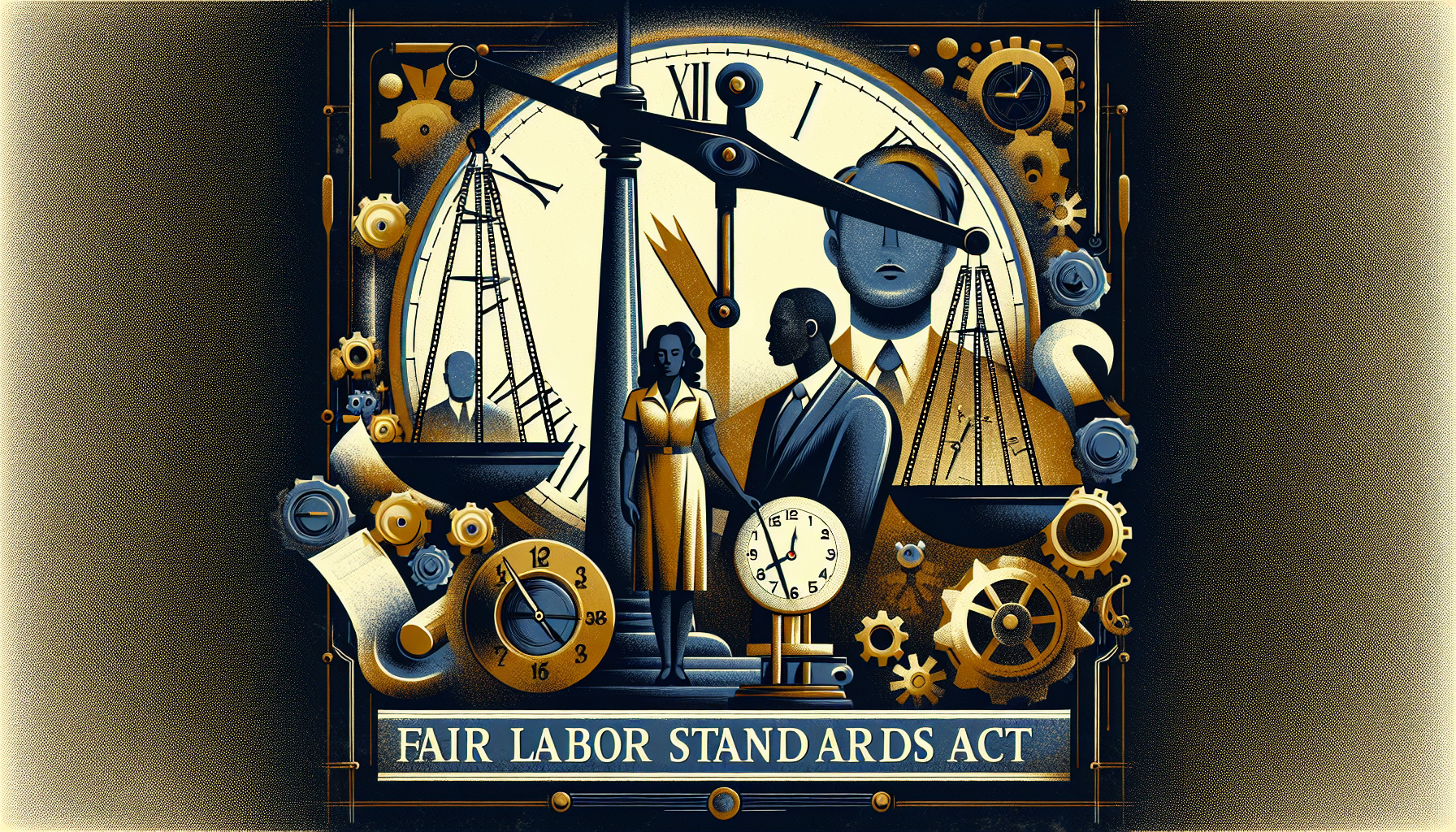Understanding the Fair Labor Standards Act Workweek: A
Guide for Supervisors, Managers, and Business Owners

When you hear the term fair labor standards act workweek, you might imagine a simple seven‑day calendar. In reality, the definition is far more nuanced, and getting it right can mean the difference between smooth payroll operations and costly compliance violations. This article walks you through exactly what the fair labor standards act workweek means, why it matters to you, and how you can structure and manage it so that your organization stays on the right side of the law.
1. What Is the Fair Labor Standards Act Workweek?

The fair labor standards act workweek is a fixed, recurring period of 168 hours (seven consecutive 24‑hour days) that an employer uses to measure an employee’s overtime eligibility. Unlike a “pay period,” which may be weekly, bi‑weekly, or semi‑monthly, the workweek is not tied to any particular day‑of‑the‑week schedule. Instead, you as the employer choose a start day and time—say, Sunday at 12:00 a.m. or Wednesday at 6:00 p.m.—and that same 168‑hour block repeats continuously until you formally change it.
Key points to remember:
Fixed, not flexible – Once you set the workweek, you cannot shift it to accommodate individual employee schedules.
Overtime threshold – Any hours worked beyond 40 within that 168‑hour window must be compensated at “time‑and‑a‑half,” unless an exemption applies.
Recordkeeping requirement – You must keep accurate records of the workweek’s start and end times for each employee covered by the FLSA.
Understanding this definition is the first step toward designing policies that protect both your business and your workforce.
2. Why the Fair Labor Standards Act Workweek Matters to
You

a. Legal Compliance
The Department of Labor (DOL) enforces the fair labor standards act workweek with stiff penalties for misclassification, missed overtime, and inaccurate recordkeeping. Even a single error can trigger back‑pay awards, liquidated damages, and civil fines that quickly add up.
b. Payroll Predictability
When you lock in a consistent fair labor standards act workweek, your payroll team knows exactly when overtime calculations begin and end. This eliminates the “guesswork” that often leads to late payments or over‑payments.
c. Employee Morale
Clear communication about the fair labor standards act workweek helps employees understand when they’ll earn overtime. Transparent expectations reduce disputes and foster a culture of fairness—an intangible benefit that can boost retention.
3. Setting Up Your Fair Labor Standards Act Workweek

Step 1: Choose a Start Day and Time
You have the freedom to start the workweek on any day and at any hour, but consistency is crucial. Common choices include:
Sunday at 12:00 a.m. – Aligns with many traditional payroll cycles.
Monday at 12:00 a.m. – Mirrors the standard business week.
Wednesday at 6:00 p.m. – Helpful for companies with non‑standard shifts.
Once you decide, document the start point in your employee handbook, HR policies, and any collective bargaining agreements.
Step 2: Communicate the Change
If you are transitioning from an existing schedule, give employees at least seven days’ notice before the new fair labor standards act workweek takes effect. This notice period satisfies the DOL’s requirement for “reasonable” communication and helps avoid claims of surprise overtime.
Step 3: Update Your Time‑Tracking System
Configure your time‑clock or electronic scheduling software to recognize the chosen start day. Most systems allow you to set a “workweek start” parameter that automatically rolls over after 168 hours. Verify that the system flags any hours worked beyond 40 as overtime for each employee.
4. Common Pitfalls and How to Avoid Them

Pitfall: Moving the workweek to avoid overtime
Why It’s a Problem: The DOL treats such manipulation as a violation of the fair labor standards act workweek.
How to Fix It: Keep the workweek static for at least 12 months before making any changes, and document the business justification.
**********
Pitfall: Using the pay period as the workweek
Why It’s a Problem: Pay periods can be irregular (e.g., semi‑monthly), which does not satisfy the 168‑hour definition.
How to Fix It: Separate the payroll schedule from the workweek schedule; they can coexist but serve different purposes.
**********
Pitfall: Failing to reset the workweek after a schedule change
Why It’s a Problem: Employees who work variable shifts may inadvertently cross the 40‑hour threshold in a new workweek.
How to Fix It: When you change shift patterns, run a “workweek audit” to ensure no hidden overtime accrues.
**********
Pitfall: Inconsistent recordkeeping
Why It’s a Problem: Inaccurate logs expose you to back‑pay liability under the fair labor standards act workweek.
How to Fix It: Implement a dual‑verification process: employee punch‑in/out + supervisor approval.
5. Managing Overtime Within the Fair Labor Standards Act
Workweek

a. Track Cumulative Hours
Because overtime is calculated per workweek, you must monitor each employee’s cumulative hours from the start point to the end point. A common error is to reset the overtime counter each calendar week (Monday‑Sunday) instead of the defined fair labor standards act workweek.
b. Apply Correct Rates
Once an employee surpasses the 40‑hour threshold, every additional hour must be paid at 1.5 times the regular rate. If you have a shift‑differential or premium pay, the overtime rate is calculated on top of those earnings.
c. Use “Fluctuating Workweek” Agreements Cautiously
Some employers adopt a “fluctuating workweek” method that averages the hourly rate over the total hours worked. The DOL permits this only if the employee receives a guaranteed minimum salary and consents in writing. Even then, the agreement must not be used to sidestep the fair labor standards act workweek overtime threshold.
6. Recordkeeping Requirements
The FLSA mandates that you retain the following for each non‑exempt employee for at least three years:
Daily start and stop times – Including any off‑clock periods.
Hours worked each day – Total hours, overtime hours, and any premium differentials.
The designated start day and time of the fair labor standards act workweek – This helps auditors verify compliance quickly.
Electronic records are acceptable as long as they are accurate, accessible, and backed up. Periodically run internal audits to ensure the data matches your payroll reports.
7. Frequently Asked Questions (FAQs)
Q: Can I have different workweeks for different groups of employees?
A: Yes. The FLSA allows multiple fair labor standards act workweeks within the same organization, provided each group’s workweek is fixed and documented.
Q: What if an employee works a split shift that crosses the workweek boundary?
A: Treat the hours as belonging to the day on which the work was performed. If a shift starts before midnight and ends after, allocate the pre‑midnight portion to the first day and the post‑midnight portion to the next day—both still fall within the same 168‑hour window.
Q: Do part‑time employees have a workweek?
A: Any employee covered by the FLSA—full‑time or part‑time—must have a designated fair labor standards act workweek if they are non‑exempt.
8. The Bottom Line
As a supervisor, manager, or business owner, mastering the fair labor standards act workweek is not optional—it’s a legal cornerstone of your payroll and labor strategy. By establishing a clear, unchanging workweek, communicating it effectively, and rigorously tracking hours, you protect your organization from costly violations while fostering a workplace where employees know exactly when they’ll earn overtime.
Take the steps outlined above, embed the checklist into your daily operations, and you’ll turn what once felt like a regulatory maze into a streamlined, compliant process that supports both your bottom line and your team’s morale.
Remember: The fair labor standards act workweek is a powerful tool. Use it wisely, and it will work for you.